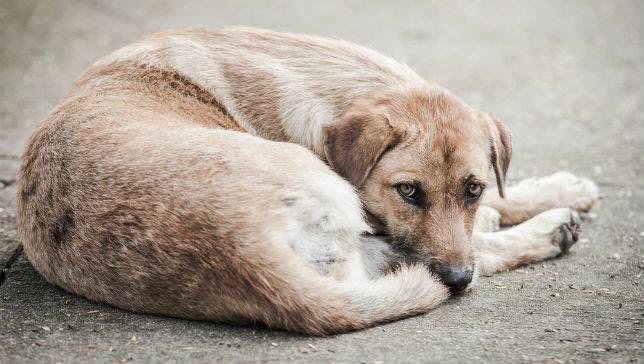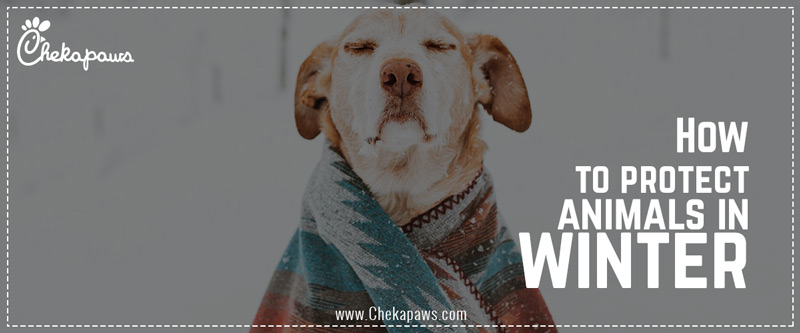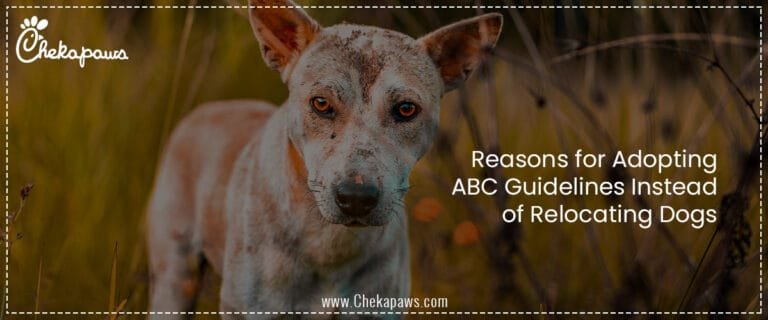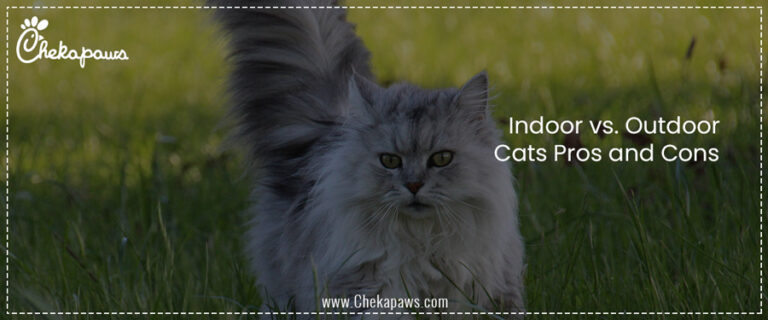Winter’s icy grip can be unforgiving, and as someone who has spent countless nights worrying about the neighbourhood strays huddled under porches, I know first-hand how devastating the cold season can be for our animal companions.
After fifteen years of volunteering with local animal shelters and caring for my own pack of rescue dogs, I’ve learned that winter preparation isn’t just about comfort—it’s about survival.
Whether we’re talking about beloved family pets or the forgotten strays wandering our streets, every animal deserves protection from winter’s harsh embrace.
As the first icy winds of winter sweep across fields and streets, countless animals—whether pampered pets, resilient strays, or humble farm animals—begin a difficult battle for survival.
Most humans can escape the cold by huddling indoors, but animals depend on us and their instincts to endure winter’s chilling embrace. Think for a moment: how does a stray dog find warmth when the temperature plummets?
How do birds feed when snow blankets the ground? This winter, let’s become the warmth our animals so desperately need. This blog is a heartfelt guide—steeped in practical wisdom and real stories—on how anyone can help animals survive and even thrive in winter.
The statistics are sobering: thousands of animals suffer from hypothermia, frostbite, and cold-related injuries each winter. But here’s what gives me hope—with proper knowledge and preparation, we can dramatically reduce these numbers.
Every simple shelter we build, every extra blanket we provide, every moment we spend educating others about winter animal care creates ripples of warmth that can save lives.
Table of Contents
Understanding Winter’s Impact on Our Animal Friends

Lack of food and no proper shelter can make their survival difficult. It’s important to keep them warm so that they don’t fall sick.
We must as humans help our voiceless animals spend the harsh winter with some degree of comfort. Help your pets and stray animals to stay warm in winter.
The temperature is dipping as winter is coming, we felt a need to write a short post for those individuals who look after stray dogs and cats outside their homes, offices or any other place. If you can make a little makeshift shelter for the community dogs that would be super as they all often huddle up in little balls and sleep during winter.
These topics may also interest you:
The Physiological Challenge of Cold Weather
When temperatures plummet, an animal’s body works overtime to maintain its core temperature. I’ve watched my own dogs’ behaviour change as winter approaches—they seek out sunny spots more frequently, curl up tighter when sleeping, and show less enthusiasm for those early morning walks.
This isn’t just behavioural preference; it’s their bodies conserving energy for the most critical function: staying warm.
Animals burn significantly more calories in cold weather, sometimes requiring 25-50% more food to maintain their body weight and energy levels.
Their metabolic rate increases, their circulatory system works harder, and their immune systems can become compromised by the constant stress of temperature regulation. For older animals or those with health conditions, this physiological burden can quickly become overwhelming.
These topics may also interest you:
Recognizing Vulnerability: Not All Animals Are Created Equal
Through my years of rescue work, I’ve learned that winter affects different animals in dramatically different ways. That robust Golden Retriever bouncing through the snow? He’s probably enjoying every minute of it. But the elderly Chihuahua shivering by the door? She needs our immediate attention and protection.
Small breeds, elderly animals, very young pets, and those with thin coats are particularly vulnerable. Short-haired breeds like Greyhounds, Whippets, and Pit Bulls feel the cold intensely, while breeds with double coats such as Huskies and Malamutes are naturally equipped for frigid temperatures.
However, even cold-hardy breeds have their limits, and prolonged exposure can lead to serious health complications.
These topics may also interest you:
Creating Safe Havens: Indoor Comfort and Warmth
The Foundation of Winter Care: Bringing Animals Inside
If there’s one message I could shout from every rooftop, it would be this: the best place for any animal during extreme cold is indoors.
I understand that not every situation allows for this—farm animals, working dogs, and yes, the countless strays who haven’t found their forever homes. But whenever possible, bringing animals inside isn’t just kind; it’s lifesaving.
For pet owners, this might mean adjusting routines and expectations. That dog who usually spends hours in the backyard?
During polar vortex conditions, outdoor time should be limited to quick bathroom breaks and short, supervised play sessions. Indoor activities become crucial—puzzle toys, training sessions, and interactive games can help burn energy when outdoor exercise is limited.
These topics may also interest you:
- Surprising flea facts for dogs and cats
- Why Dogs are Man’s Best Friend?
- What to Expect When You’re Expecting a New Puppy: A Guide for First-Time Owners
Creating Cozy Spaces That Heal the Soul
The warmth of a well-prepared indoor space goes beyond just temperature control. I’ve seen rescue animals arrive at shelters on frigid nights, their spirits as frozen as their bodies. The transformation that happens when they settle into a warm, soft bed in a quiet corner is nothing short of magical.
Strategic bed placement makes an enormous difference. Position pet beds away from drafts, windows, and exterior doors. Those adorable spots by the fireplace? Perfect. Near the heating vent? Even better. Elevate beds slightly off cold floors using pet cots or even folded blankets underneath—this simple trick prevents cold from seeping up through the floor.
For senior pets or those with arthritis, consider heated pet beds or warming pads designed specifically for animals. These can provide gentle, consistent warmth that eases stiff joints and promotes better sleep. Just ensure any heating element has safety features and automatic shut-offs to prevent burns.
These topics may also interest you:
- How to Introduce Your Cat to Other Pets
- 10 Surprising benefits of having a cat in your life
- Common health problems in cats and how to prevent them
The Critical Importance of Proper Nutrition During Cold Months
Adjusting Diets for Increased Energy Demands
Nutrition becomes absolutely critical during winter months, yet it’s one of the most misunderstood aspects of cold-weather care. Many people assume pets need less food in winter because they’re less active, but the opposite is often true.
Animals expend significant energy maintaining body temperature, and inadequate nutrition can quickly lead to dangerous weight loss and compromised immune function.
Protein requirements often increase during cold weather. High-quality protein sources help maintain muscle mass and provide the building blocks for energy production.
For dogs spending time outdoors, consider increasing protein intake by 20-30% during the coldest months, but always consult with a veterinarian before making dramatic dietary changes.
Healthy fats become winter superheroes in pet diets. Omega-3 fatty acids not only support coat health and provide extra insulation but also offer anti-inflammatory benefits that are particularly valuable for older animals dealing with arthritis pain that may worsen in cold weather.
Fish oil, flaxseed oil, or specialized pet supplements can boost these essential nutrients.
These topics may also interest you:
- 10 Common Health Issues in Hamsters and How to Treat Them
- Why Hamsters Are The Best Small Pets For Kids
- The Benefits of Adopting an Older Dog – Give Them a Second Chance
Hydration: The Forgotten Winter Essential
One of the most dangerous winter myths I encounter is that animals need less water when it’s cold. The reality is quite different—dry winter air and indoor heating can actually increase dehydration risk.
I’ve learned to monitor water intake carefully during winter months, ensuring bowls are always full and water temperature is appealing to encourage drinking.
For outdoor animals, frozen water bowls present a serious challenge. Heated water bowls or frequent water changes become essential. Never rely on snow as a primary water source—it can contain harmful chemicals, bacteria, and doesn’t provide adequate hydration.
These topics may also interest you:
- 10 Reasons Why Dogs Make the Best Pets – Adopt a Dog Today
- How to protect pet dogs, cats and strays from heat wave
- 10 Tips for Traveling with Your Dog: Making Trips Hassle-Free
Protecting Precious Paws: Winter Paw Care Essentials
Understanding Paw Vulnerability
Paw care during winter breaks my heart every time I see it neglected. Those tender paw pads that work so hard to carry our beloved companions can suffer tremendously from winter conditions. Road salt, ice-melting chemicals, frozen ground, and ice can cause cracking, burning, and serious injury to delicate paw tissue.
I’ve treated dogs with chemical burns from sidewalk salt, cats with frostbitten toe pads, and countless animals with painful cracks in their paw pads from cold, dry conditions. These injuries are not only painful but can become infected, creating much more serious health problems.
Practical Paw Protection Strategies
Pre-walk preparation has become routine in my household. Before heading out, I apply pet-safe paw balm or petroleum jelly to my dogs’ pads.
This creates a protective barrier against salt and chemicals while moisturizing the pads to prevent cracking. The investment in quality paw protection products pays dividends in comfort and health.
Post-walk care is equally crucial. I keep a towel by the door specifically for wiping paws after every outdoor excursion.
This removes salt, chemicals, and ice balls that can form between toes. For animals who tolerate them, booties provide excellent protection, though it does take patience to help pets adjust to wearing them.
Regular paw inspections become even more important in winter. I check between toes for ice build-up, examine pads for cracks or cuts, and look for any signs of irritation or injury.
Early detection and treatment of paw problems prevents minor issues from becoming major health concerns.
These topics may also interest you:
- How to Introduce a New Cat to Your Home
- 10 Pet Animals For Emotional Support
- Types Of Pet Allergies and How to Treat Them
Recognizing and Responding to Cold-Weather Emergencies
Identifying Hypothermia: Reading the Warning Signs
Hypothermia terrifies me more than almost any other winter danger because it can develop so quickly and escalate so rapidly. An animal’s normal body temperature typically ranges from 100.5 to 102.5 degrees Fahrenheit, and when it drops to 98-99 degrees, we’re already in dangerous territory.
The early warning signs include intense shivering, lethargy, and seeking warm places to burrow. Animals might become confused or disoriented, their skin may appear pale, and they often exhibit a tucked posture trying to conserve body heat.
As hypothermia progresses, the signs become more alarming: shivering stops, breathing becomes shallow and irregular, and animals may collapse.
Frostbite: The Silent Threat
Frostbite often accompanies hypothermia but can be harder to detect initially. The extremities—ears, tail, nose, and paw pads—are most vulnerable because the body shunts blood away from these areas to protect vital organs. Initially, frostbitten areas appear pale or bluish-white, later becoming red and swollen as circulation returns.
Never use hot water or heating pads on frostbitten areas. This can cause severe burns and additional tissue damage. Instead, wrap the animal in warm (not hot) towels and seek immediate veterinary attention. The damage from frostbite may not be apparent for days, which is why any suspected frostbite requires professional evaluation.
Emergency Response Protocol
When dealing with hypothermia or frostbite, time is critical. Move the animal to a warm, dry environment immediately. Wrap them in warm blankets or towels, focusing on the core body area rather than the extremities initially. Monitor their temperature if possible, and transport to an emergency veterinary facility as quickly as safely possible.
Never attempt to warm an animal too rapidly—this can cause shock and additional complications. Gradual warming under professional supervision often yields the best outcomes and prevents secondary injuries from overly aggressive rewarming.
These topics may also interest you:
- Why I Started This Blog Page?
- 10 Ways to Get Involved with Pet Owners in Your City
- How to educate people and children about animal welfare
Special Considerations for Senior and Vulnerable Animals
The Challenges Aging Animals Face
Senior animals hold a special place in my heart, having adopted several elderly dogs over the years. Winter presents unique challenges for aging pets that go beyond simple temperature sensitivity. Arthritis pain intensifies in cold weather, circulation becomes less efficient, and immune systems may be compromised.
I’ve learned to adjust expectations and routines for senior animals during winter months. Shorter, more frequent walks replace long hikes. Indoor exercise becomes creative and essential. Orthopaedic bedding provides extra joint support, and sometimes medication adjustments help manage increased arthritis pain.
Joint Health and Mobility
Cold weather can make arthritic joints feel like rusty hinges—stiff, painful, and resistant to movement. For senior pets, this can mean the difference between maintaining independence and becoming immobilized by pain. Gentle exercise remains important even in winter, helping maintain flexibility and circulation.
I’ve found that brief indoor play sessions, stretching routines, and short walks during the warmest part of the day help keep senior pets mobile. Joint supplements like glucosamine and chondroitin may provide additional support, but always consult with a veterinarian before adding supplements to any pet’s routine.
Monitoring Health Changes
Senior animals require more frequent health monitoring during winter months. Weight loss can happen quickly when older animals struggle to maintain body temperature, and underlying health conditions may become more apparent under winter stress. Regular veterinary check-ups become even more crucial during the cold season.
These topics may also interest you:
- What are the conditions needed to become a foster parent for cats and dogs?
- How to Cope with Losing Your Pet
- Indoor vs. Outdoor Cats Pros and Cons
Helping Stray and Community Animals: Extending Compassion Beyond Our Homes
Understanding the Stray Animal Crisis
The statistics about stray animals in winter keep me awake at night sometimes. In India alone, over 70 million stray animals struggle to survive, and winter takes a devastating toll on these forgotten souls. But here’s what I’ve learned through years of community work: every single action matters, no matter how small it might seem.
I’ve built simple shelters that saved cats’ lives, left food that prevented dogs from starving, and provided water that kept animals hydrated when natural sources froze. These aren’t grand gestures—they’re simple acts of compassion that create profound impacts on individual lives.
Building DIY Winter Shelters: Simple Solutions That Save Lives

Building winter shelters for stray animals doesn’t require construction expertise or expensive materials. Some of my most effective shelters have been built from materials that would otherwise end up in landfills. The key principles are simple: insulation, elevation, wind protection, and appropriate sizing.
The basic rubbermaid bin shelter has become my go-to design. Using two storage bins—one that fits inside the other—creates an insulated space perfect for 1-2 cats. Cut a 5.5-6 inch entrance hole (about the width of a cat’s whiskers) positioned at least 6 inches off the ground to prevent snow and rain entry. Fill the space between bins with straw (never hay, which retains moisture and can freeze).
Styrofoam cooler shelters offer excellent insulation and are often available free from restaurants or grocery stores. These can be placed inside larger containers for additional protection, or used alone in sheltered locations. The entrance should face away from prevailing winds, and the shelter should be elevated slightly off the ground using 2x4s or similar materials.
These topics may also interest you:
- Senior Pet Care Tips. How to Keep Your Aging Pet Comfortable?
- The Rise of Pet Tech: How Smart Devices Are Changing Pet Care
- Homemade Pet Food: Is It Healthier Than Store-Bought?
Feeding and Watering Strategies for Strays
Providing food for stray animals during winter isn’t just about preventing starvation—it’s about giving them the energy needed to maintain body heat and survive. Higher-calorie foods become essential during cold weather, and increased portions may be necessary to meet elevated energy demands.
I’ve learned to place food in protected areas where it won’t freeze or become contaminated by snow. Wet food can provide additional hydration, but it freezes quickly in extreme cold. Dry food with added warm broth creates an appealing, nutritious meal that provides both calories and hydration.
Water provision requires creativity in freezing temperatures. I use heated water bowls when electricity is available, or frequently refresh water bowls throughout the day when it’s not. Plastic bowls work better than metal in extreme cold—an animal’s tongue can stick to frozen metal, causing injury.
Community Involvement and Safety
Working with stray animals requires both compassion and caution. Not all stray animals are socialized to human contact, and fear or pain can make even gentle animals defensive. I always approach slowly, speak softly, and never attempt to grab or corner a frightened animal.
Building community support multiplies our impact exponentially. I’ve organized neighbourhood shelter-building parties, coordinated feeding schedules with neighbours, and worked with local businesses to collect materials. When communities come together around animal welfare, the results can transform entire neighbourhoods.
These topics may also interest you:
- How to Socialize Your Pet: Tips for Puppies, Kittens & Rescues
- How to Create a Pet-Friendly Home Without Compromising Style
- When Should Obedience Training Be Started for Puppies?
Busting Dangerous Winter Pet Care Myths
Myth 1: “Fur is Enough Protection Against Cold”
This myth has probably caused more animal suffering than any other winter misconception. While fur does provide insulation, it’s not a magical shield against freezing temperatures. I’ve seen thick-coated dogs develop hypothermia, and short-haired breeds can suffer frostbite in surprisingly mild conditions.
The reality is that coat type, age, health status, and individual tolerance all affect an animal’s cold tolerance. Even breeds developed for cold climates like Huskies have limits, and prolonged exposure can overwhelm their natural defences.
Myth 2: “Animals Need Less Water in Winter”
This dangerous myth persists despite overwhelming evidence to the contrary. Dehydration in winter can be just as severe as summer dehydration, and dry winter air actually increases fluid loss through respiration. I monitor my animals’ water intake carefully during winter and often find they need encouragement to drink adequate amounts.
These topics may also interest you:
- 5 Fun Ways to Include Your Pet in Holiday Festivities
- Why Cats Make Amazing Companions
- How to Make Your Own Dog Treats
Myth 3: “Weight Gain Helps Keep Animals Warm”
While some animals naturally put on a winter coat of fat, deliberately allowing weight gain isn’t healthy or necessary. Excess weight stresses joints, reduces mobility, and can worsen arthritis—particularly problematic for animals already dealing with cold-weather joint stiffness. Proper nutrition and adequate shelter provide much better protection than extra pounds.
Myth 4: “Indoor Animals Don’t Need Special Winter Care”
Even indoor animals face winter challenges that many owners overlook. Dry indoor air can cause skin irritation and respiratory issues. Reduced daylight affects mood and energy levels. Less outdoor exercise can lead to weight gain and behavioral problems. Indoor animals still need environmental adjustments, activity modifications, and health monitoring during winter months.
These topics may also interest you:
- What to Look for When Adopting a New Cat
- 10 Fun Brain Games for Dogs
- 5 Challenges That Made Me a Better Pet Parent
Emergency Preparedness: Planning for the Unexpected
Building a Winter Emergency Kit
Living through several power outages during ice storms taught me the importance of emergency preparedness for animals. When the heat goes out and roads become impassable, having supplies on hand can mean the difference between comfort and crisis.
My emergency kit includes at least one week’s worth of food and water for each animal, stored in waterproof containers. Medications are crucial—many veterinary offices close during severe weather, making refills impossible. I keep extra blankets, first aid supplies, and battery-powered heating sources specifically designated for the animals.
Important documents should be stored in waterproof containers and include veterinary records, vaccination certificates, medication lists, and recent photographs of each animal. If evacuation becomes necessary, these documents can be lifesaving for proving ownership and providing medical history to emergency shelters or veterinarians.
Creating Backup Plans
Emergency planning means thinking through various scenarios before they occur. What if the power goes out for days? What if evacuation becomes necessary? What if your primary veterinarian isn’t available? Having backup plans reduces panic and ensures better outcomes during actual emergencies.
I maintain relationships with multiple veterinary clinics, identify pet-friendly evacuation shelters in advance, and have arrangements with friends who could care for my animals if needed. These preparations provide peace of mind and practical solutions when emergencies arise.
Communication and Identification
Winter weather can separate animals from families more easily than people realize. Snow changes familiar scents, making it harder for lost animals to find their way home. Ice can make navigation treacherous for both humans and animals.
Updated identification becomes crucial during winter months. Ensure collars fit properly (they may need adjustment as animals’ coats thicken), ID tags include current phone numbers, and microchip information is up to date. Recent photographs should be easily accessible in case they’re needed for lost pet reports.
These topics may also interest you:
- 10 DIY Cat Toys
- How to Host a Pet-Friendly Event in Your Community
- How to Help Your Pet Get Over Their Car Anxiety
The Nutritional Foundation: Feeding for Winter Health
Understanding Increased Caloric Needs
One of the most eye-opening aspects of my winter animal care education was learning how dramatically caloric needs can increase during cold weather. Animals aren’t just eating more because they’re bored or because food tastes better—they’re literally burning more fuel to keep their internal fires burning.
Working dogs and outdoor animals may need 25-50% more calories during the coldest months. Even indoor pets who spend time outside for walks and bathroom breaks expend extra energy maintaining body temperature.
I’ve learned to monitor body condition carefully during winter, adjusting food quantities based on individual needs rather than following summer feeding routines blindly.
Supporting Immune Function Through Nutrition
Winter stress taxes immune systems, making proper nutrition even more critical for maintaining health. Antioxidant-rich foods help combat the cellular damage caused by temperature stress, while adequate protein supports antibody production and tissue repair.
I’ve found that incorporating winter superfoods like sweet potatoes, carrots, and leafy greens (in appropriate quantities for different species) can boost nutritional density without dramatically changing familiar diets.
For animals recovering from cold exposure or stress, temporary nutritional supplementation under veterinary guidance can speed recovery and prevent secondary infections.
Addressing Digestive Changes
Cold weather and reduced activity can slow digestion, leading to constipation and discomfort. I’ve learned to incorporate fibre-rich foods and ensure adequate hydration to support digestive health during winter months.
Pumpkin puree (not pie filling) works wonderfully for both dogs and cats, providing fibre and moisture while being highly palatable.
Probiotics become particularly valuable during winter months when stress, dietary changes, and reduced activity can disrupt normal gut bacteria. These beneficial bacteria support not only digestive health but also immune function—particularly important when animals face increased environmental challenges.
These topics may also interest you:
- Natural Remedies to Get Rid of Fleas and Ticks
- Common Behavioral Problems in Cats and How to Fix Them
- How to Train Your Dog to Not Have Food Aggression
Understanding Breed-Specific Winter Needs
Cold-Hardy Breeds: Special Considerations
Living with both a Siberian Husky and a Chihuahua has taught me that breed-specific care isn’t just about coat length—it’s about understanding each animal’s evolutionary background and individual needs. My Husky thrives in snow, but even he needs shelter from wind and precipitation during extreme weather events.
Double-coated breeds like Golden Retrievers, German Shepherds, and Malamutes have natural advantages in cold weather, but they also have specific care requirements. Never shave these breeds during winter—their undercoat provides crucial insulation that artificial heating can’t replace. However, they may overheat in heated indoor spaces and need cooler resting areas.
Vulnerable Breeds: Extra Protection Strategies
Single-coated and short-haired breeds require significantly more protection during cold weather. Greyhounds, Whippets, Chihuahuas, and many pit bull type dogs simply aren’t built for cold temperatures and need sweaters, coats, and limited outdoor exposure.
I’ve learned that size matters tremendously in cold weather tolerance. Small breeds lose body heat much faster than large breeds due to their surface-area-to-volume ratio. Toy breeds may need sweaters even for quick bathroom breaks when temperatures drop below 40 degrees Fahrenheit.
Age and Health Status Modifications
Puppies and senior animals need special consideration regardless of breed. Very young animals haven’t fully developed temperature regulation, while older animals may have decreased circulation and metabolic efficiency. Both groups need shorter outdoor exposure times, warmer indoor temperatures, and more frequent health monitoring.
Animals with health conditions like diabetes, heart disease, or arthritis face additional challenges during cold weather. Medications may need adjustment, exercise routines require modification, and closer veterinary monitoring becomes essential.
These topics may also interest you:
- 7 Tips That Will Save You Money as a Pet Parent
- 5 Puppy Behaviors to Nip in the Bud Early
- How to Clip Your Pet’s Nails Without the Drama
Mental Health and Enrichment During Winter Months
Combating Seasonal Depression in Animals
Just as humans can experience seasonal affective disorder, animals can also struggle with mood changes during darker, colder months. I’ve noticed significant behavioral changes in some of my animals as daylight decreases—less energy, reduced appetite, and increased sleeping.
Light therapy can help some animals, whether through increased exposure to natural sunlight during the limited daylight hours or through specialized pet-safe light therapy devices. Maintaining routines becomes even more important when environmental changes challenge mental well-being.
Creative Indoor Exercise Solutions
When outdoor exercise becomes limited, creativity becomes essential for maintaining physical and mental health. I’ve developed entire repertoires of indoor games, puzzle toys, and training exercises that can tire out even high-energy dogs without requiring large spaces.
Mental stimulation often proves more tiring than physical exercise, making puzzle feeders, hide-and-seek games, and training sessions particularly valuable during winter months.
Interactive toys that dispense treats, rotating toy selections to maintain novelty, and setting up obstacle courses in hallways can provide entertainment and exercise when outdoor options are limited.
Maintaining Social Connections
Winter isolation affects animals just as profoundly as it affects humans. Regular interactions with other animals and people become even more important when environmental restrictions limit natural social opportunities. Dog parks may be less accessible, but indoor playgroups, training classes, and pet-friendly stores can provide valuable social stimulation.
For stray and community animals, consistent human contact during feeding and care routines provides not only physical sustenance but also emotional support that can make the difference between surviving and thriving through difficult winter months.
These topics may also interest you:
- How to Introduce Your Pets to a New Baby
- 10 Things You Should Know Before You Go Hiking with Your Dog
- How To Keep Your Longhaired Cat’s Fur from Matting
Looking Forward: Building Year-Round Resilience
Summer Preparation for Winter Success
The best winter animal care actually begins during summer months. Health assessments during warm weather can identify issues that might become serious problems when cold weather adds additional stress. Dental cleanings, vaccinations, and treatment of chronic conditions are much easier to manage when weather isn’t a complicating factor.
Building relationships with veterinarians, emergency clinics, and animal welfare organizations during non-crisis times creates support networks that become invaluable during winter emergencies. I maintain these connections year-round, knowing they’ll be crucial when weather makes everything more challenging.
Community Building and Education
Some of my most meaningful work happens in community education and organization. Teaching neighbors to recognize signs of cold stress in animals, organizing group shelter-building projects, and creating neighborhood networks for stray animal care multiplies our impact far beyond what any individual can accomplish alone.
Youth involvement creates long-term change in how communities approach animal welfare. When children learn to build shelters, recognize animal distress, and understand their role in protecting vulnerable animals, they carry these values forward and teach others.
The Ripple Effect of Compassion
Every animal we help, every shelter we build, and every person we educate creates expanding circles of compassion that extend far beyond the immediate impact. That stray cat who survives winter because of a shelter we built might go on to have kittens who also survive because someone else learned from our example and built more shelters.
The dog rescued from a frozen pond doesn’t just live—they become part of a family, bring joy to children, provide companionship to elderly owners, and inspire others to open their hearts to animals in need. These ripple effects remind me why winter animal care isn’t just about surviving a season—it’s about building a more compassionate world.
Winter will always present challenges for animals, but with knowledge, preparation, and community support, we can ensure that cold weather means temporary discomfort rather than life-threatening crisis. Every animal deserves warmth, safety, and care during the harsh months ahead. Through our combined efforts, we can make sure they receive it.
The snow may fall and the temperatures may plummet, but our commitment to protecting those who cannot protect themselves remains constant. In providing warmth to animals in need, we discover that we too are warmed—by purpose, by compassion, and by the knowledge that every small act of kindness creates waves of positive change that extend far beyond what we can see.
These topics may also interest you:
- How to Pick the Best Toys for your Dog
- 10 Fruits and Veggies that Double as Healthy Dog Treats
- How to Train Your Dog to Walk on a Leash
Conclusion: Every Action Matters
As I write this, the first chill of autumn is beginning to settle over my neighborhood, and I’m already checking my supplies, testing heated water bowls, and mentally preparing for another winter of vigilance. The seasonal transition reminds me once again why this work feels so urgent and so necessary.
Winter animal care isn’t just about surviving a season—it’s about preserving dignity, protecting the vulnerable, and demonstrating that compassion has no boundaries. Every shelter we build, every bowl of food we provide, every time we bring an animal inside from the cold, we’re participating in something larger than individual rescue. We’re building a community that values life, that protects those who cannot protect themselves, and that understands our interconnectedness with all living beings.
The techniques and strategies outlined in this guide represent decades of collective experience from veterinarians, animal welfare professionals, and countless individuals who have made winter animal care their mission. But knowledge alone isn’t enough—it requires action, consistency, and the willingness to step outside our comfort zones when animals need us most.
Start where you are, with what you have. You don’t need to be an expert to make a difference. That towel you use to dry your dog’s paws after winter walks matters. The extra blanket you leave on your porch for the neighbourhood stray matters. The conversation you have with a neighbour about recognizing hypothermia symptoms matters. These small actions accumulate into a web of protection that can transform entire communities.
For pet owners, remember that your animals depend on you completely for their winter survival. They trust you to recognize their needs, adjust their care as conditions change, and advocate for their wellbeing when they cannot advocate for themselves. This responsibility is profound, but it’s also a privilege—the chance to provide comfort, safety, and love when it’s needed most.
These topics may also interest you:
- 5 Tips on Drama Free Cat Baths
- 10 Ways to Encourage Good Behavior in Your Puppy
- What Kind of Leash Should You Buy Your Dog?
For those moved to help stray and community animals, know that your efforts ripple outward in ways you may never fully see. That cat who survives winter because of a shelter you built might go on to live many more years, bringing joy to those who eventually adopt her. The dog who receives consistent food and water through your care might maintain the health and strength needed to reunite with a lost family or find a new one.
Winter will test us all—our preparation, our compassion, and our commitment to putting animal welfare above our own convenience. But I’ve seen communities come together in remarkable ways when animals need help. I’ve watched strangers coordinate feeding schedules for stray colonies, neighbors share resources to build shelters, and children learn the deep satisfaction that comes from protecting creatures smaller and more vulnerable than themselves.
The approaching winter may bring cold winds and frozen ground, but it also brings opportunities to demonstrate the warmth of human compassion. Every animal that sleeps safely tonight because of someone’s care, every pet that stays healthy through proper winter nutrition, every stray that survives harsh weather because of a simple shelter—these are victories worth celebrating and protecting.
As temperatures drop and challenges mount, let’s remember that we’re not just preparing animals for winter—we’re preparing ourselves to be the kind of people who respond to need with action, who face difficulties with creativity and determination, and who understand that in protecting others, we protect something essential in ourselves.
The animals counting on us this winter don’t know about our busy schedules, our budget constraints, or our own personal challenges. They only know whether warmth and safety are available when they need them most. By choosing to provide that warmth and safety, we not only save lives—we save something precious in our own souls, something that makes us more fully human and more deeply connected to the world we all share.
Winter is coming, but we are ready. Together, we will keep them warm.
These topics may also interest you:
- 10 Silly Things Our Pets Do That Are Adorable
- 5 Best Brushes for Dogs
- 5 Common Signs of Stress in Dogs and Cats
- How to Deal with a Jealous Pet
- 5 Signs to never ignore in pets
- Ideas Keep Dog Entertained While Home Alone
- What You Need to Know About Pet First Aid
- 5 Products That Keep Your Pet’s Mind Busy While You’re at Work
- Is It Okay to Let My Dog Run Off-Leash?
- Teaching Discipline the Fun Way: How to Train Your Dog Without the Stress








This is really vry helful fr stray animal<3